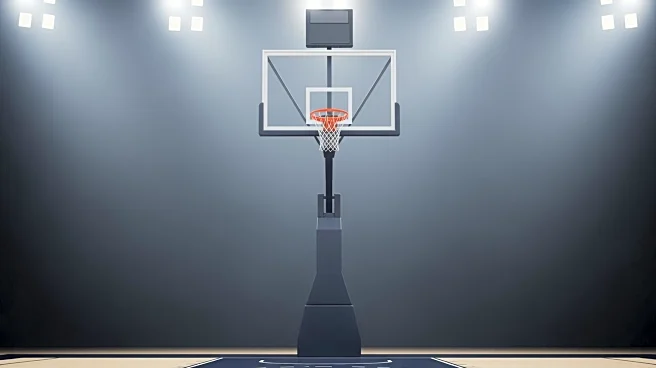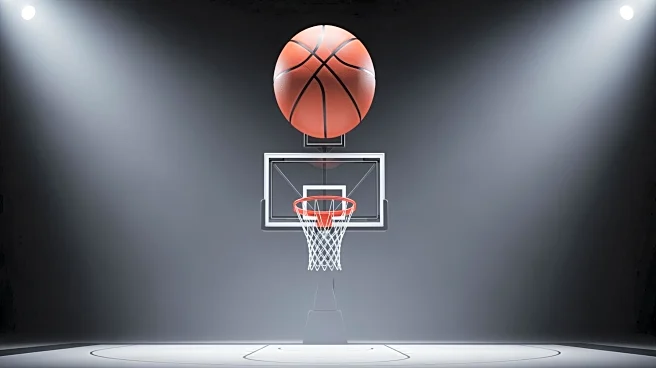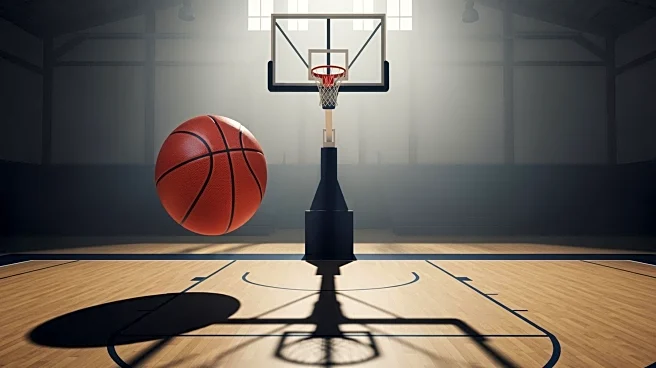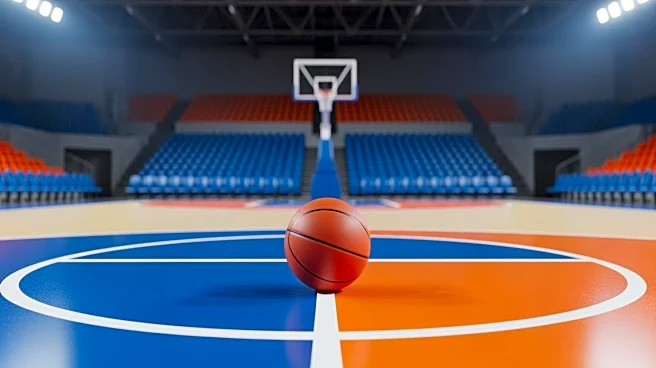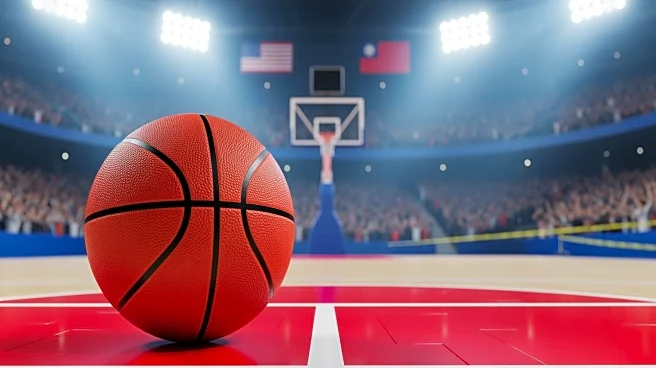What's Happening?
Florida coach Todd Golden made history by debuting Olivier Rioux, the tallest player in college basketball history, during a game against North Florida. Rioux, a 7-foot-9 center and the world's tallest teenager,
entered the game with 2:09 remaining, following chants from the crowd. Despite not touching the ball, Rioux's presence drew significant attention and support from fans and teammates alike. Rioux, a redshirt freshman from Canada, had previously chosen to redshirt last season to focus on improving his game. His debut was marked by excitement and encouragement from the crowd and his team, highlighting his unique stature and potential impact on the sport.
Why It's Important?
Olivier Rioux's debut as the tallest player in college basketball history is significant for several reasons. It highlights the inclusivity and diversity within sports, showcasing how unique physical attributes can be celebrated and integrated into competitive play. Rioux's presence on the court also brings attention to the University of Florida's basketball program, potentially increasing media coverage and fan interest. Additionally, Rioux's journey from a viral sensation to a collegiate athlete underscores the importance of perseverance and dedication in sports. His debut may inspire other athletes with unique characteristics to pursue their dreams, regardless of conventional standards.
What's Next?
Rioux's future in college basketball will likely involve gradual integration into more games, especially during blowouts, as indicated by Coach Golden. His development will be closely watched by fans and sports analysts, who are eager to see how his height will influence his playing style and effectiveness on the court. The University of Florida may leverage Rioux's unique stature for promotional activities, enhancing the visibility of their basketball program. As Rioux gains more experience, he could become a key player for Florida, contributing to their strategy and performance in upcoming seasons.
Beyond the Headlines
Rioux's debut raises interesting questions about the role of physical diversity in sports and how it can be harnessed for competitive advantage. His presence challenges traditional notions of athleticism, encouraging a broader understanding of what constitutes a valuable player. This event also highlights the cultural fascination with extraordinary physical traits, which can lead to increased media attention and public interest. Rioux's journey may inspire discussions on how sports organizations can support athletes with unique characteristics, ensuring they have the resources and opportunities to succeed.
